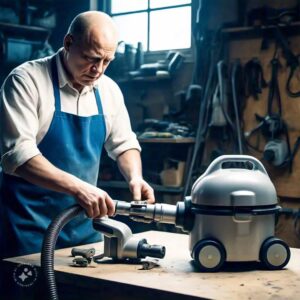Vacuum Cleaner Attachments Explained: What to Use and When
Vacuum cleaners have become an indispensable part of modern households, helping us maintain clean and healthy living spaces with minimal effort. While the primary function of a vacuum cleaner is straightforward, the array of attachments that often accompany these devices can be overwhelming. Understanding the purpose of these attachments and how to use them effectively can make all the difference in your cleaning routine. In this article, we will break down the most common vacuum cleaner attachments, their uses, and the best scenarios to utilize them.

1. Crevice Tool
The crevice tool is a long, narrow attachment designed for precision cleaning in hard-to-reach areas. Its slim profile makes it perfect for:
- Cleaning along baseboards.
- Reaching into tight spaces, such as between couch cushions.
- Removing debris from corners and edges of rooms.
- Accessing the space between car seats.
When to Use: The crevice tool is ideal for detail-oriented tasks where larger attachments cannot fit. Use it during deep-cleaning sessions to tackle hidden dust and debris.
2. Dusting Brush
The dusting brush features soft bristles that gently agitate and lift dust without scratching surfaces. This attachment is excellent for:
- Dusting shelves, blinds, and delicate furniture.
- Cleaning lampshades and light fixtures.
- Removing dust from electronics, such as keyboards and televisions.
When to Use: The dusting brush is your go-to attachment for fragile or intricate surfaces where a standard vacuum head might be too harsh.
3. Upholstery Tool
The upholstery tool typically has a wide, flat head and may include fabric strips or small bristles to enhance cleaning. It is specifically designed for:
- Removing dirt, pet hair, and crumbs from furniture.
- Cleaning mattresses and cushions.
- Freshening up fabric surfaces.
When to Use: Use the upholstery tool regularly to maintain the cleanliness of your sofas, chairs, and beds. It’s especially useful in homes with pets or young children.
4. Pet Hair Attachment
If you have furry friends, a pet hair attachment is a game-changer. These attachments often come with rubberized bristles or rotating brushes to lift and capture stubborn pet hair effectively. They’re great for:
- Cleaning pet beds.
- Removing fur from carpets, rugs, and furniture.
- Tackling hair build-up in your car.
When to Use: Use the pet hair attachment regularly to minimize allergens and keep your home looking its best. This tool is essential for pet owners.
5. Carpet Brush or Powerhead
The carpet brush, often motorized or turbo-powered, is designed to deep clean carpets by agitating the fibers to loosen embedded dirt. It’s highly effective for:
- Deep cleaning high-pile and low-pile carpets.
- Removing ground-in dirt and debris.
- Refreshing heavily trafficked areas.
When to Use: Use this attachment weekly in carpeted rooms or after events where heavy foot traffic might have occurred.
6. Hard Floor Attachment
A hard floor attachment, also known as a bare floor tool, typically has soft bristles or a flat design to prevent scratching. It’s perfect for:
- Sweeping up dust and debris from hardwood, tile, and laminate floors.
- Avoiding the risk of scratches caused by traditional vacuum heads.
When to Use: Use this tool for regular cleaning of hard flooring surfaces to maintain their finish and appearance.
7. Extension Wand
The extension wand is a simple yet powerful addition that enhances the reach of your vacuum cleaner. It’s ideal for:
- Reaching high ceilings, corners, and light fixtures.
- Cleaning under heavy furniture without bending down.
- Tackling cobwebs in hard-to-access areas.
When to Use: Use the extension wand whenever you need additional reach, whether for high or low surfaces.
8. Turbo Brush
Turbo brushes, often air-driven, are mini versions of motorized vacuum heads. They’re designed for precision cleaning and work well for:
- Removing hair and debris from stairs.
- Cleaning small rugs and upholstery.
- Tackling stubborn dirt in confined spaces.
When to Use: Use the turbo brush for localized deep cleaning, especially in areas where a full-sized vacuum head might be too cumbersome.
9. Mattress Tool
The mattress tool is a flat attachment specifically designed for cleaning beds. Its unique design makes it suitable for:
- Removing allergens, dust mites, and debris from mattresses.
- Cleaning pillows and upholstered headboards.
- Maintaining hygiene in sleeping areas.
When to Use: Use the mattress tool every few months or more frequently if you suffer from allergies.
10. Combination Tools
Many vacuum cleaners come with combination tools that serve multiple functions, such as a crevice tool that doubles as a dusting brush. These tools offer versatility and convenience for a variety of tasks.
When to Use: Use combination tools for quick clean-ups and when you’re short on time.
Tips for Using Vacuum Attachments Effectively
To get the most out of your vacuum cleaner attachments, consider these tips:
- Know Your Surfaces: Match the attachment to the surface you’re cleaning to avoid damage and ensure optimal performance.
- Regular Maintenance: Clean your attachments regularly to prevent clogs and maintain suction power.
- Experiment: Don’t be afraid to try different attachments for unconventional tasks, such as using the dusting brush to clean car interiors.
- Follow Manufacturer Guidelines: Check your vacuum’s user manual for specific recommendations on attachment use.
Conclusion
Vacuum cleaner attachments are more than just add-ons; they are specialized tools designed to make your cleaning tasks easier, faster, and more effective. By understanding their functions and knowing when to use them, you can unlock the full potential of your vacuum cleaner and maintain a cleaner, healthier home. Whether you’re tackling pet hair, high ceilings, or delicate surfaces, there’s an attachment for every job. Happy cleaning!
For more visit https://vacuumsinsights.com.